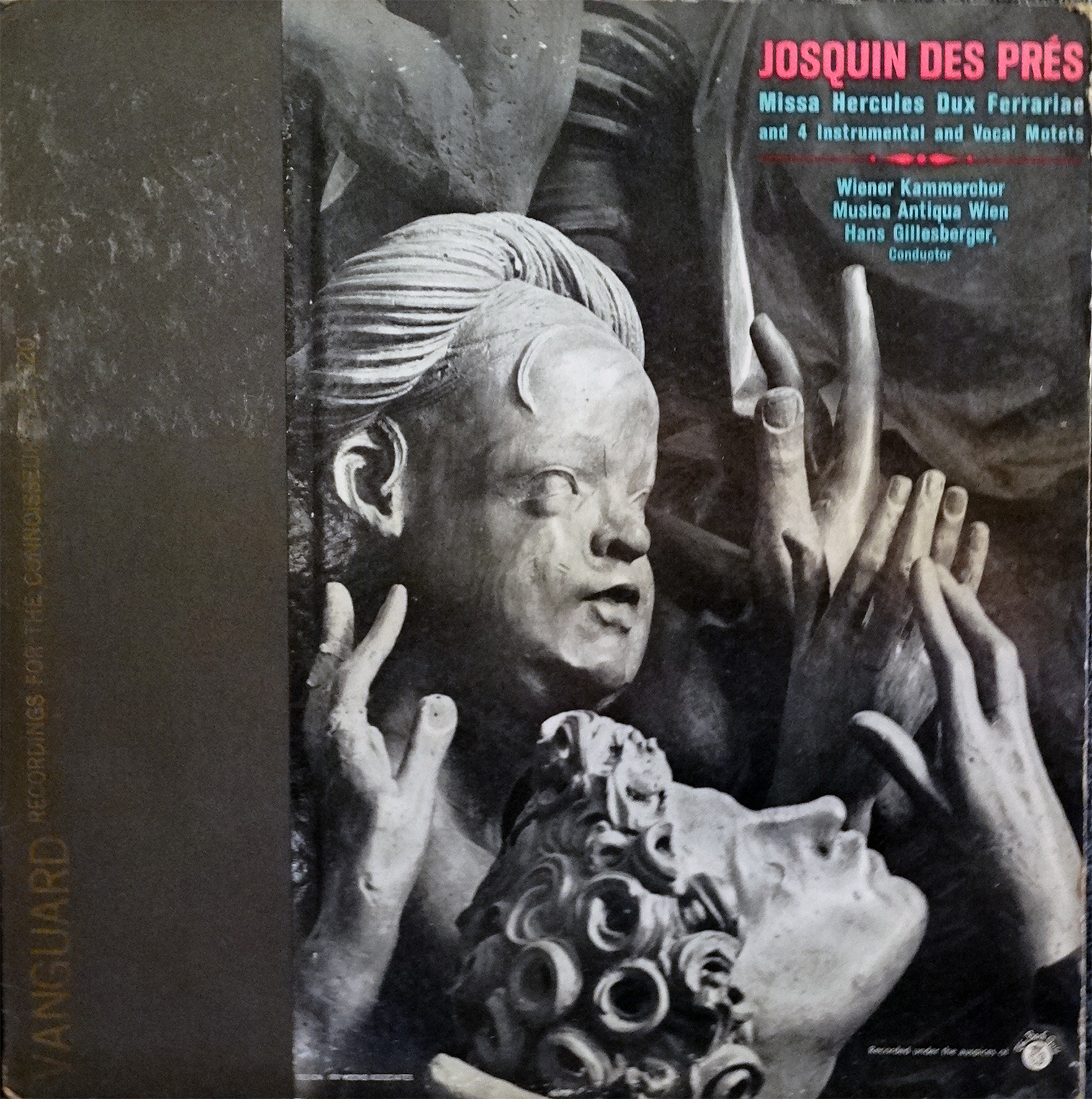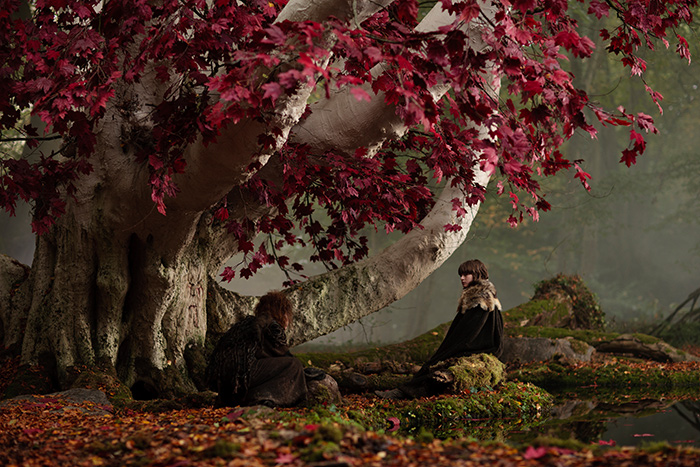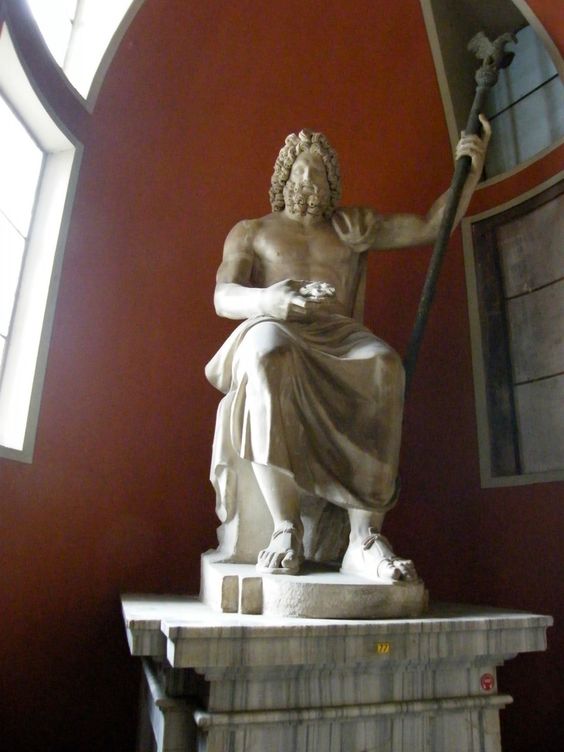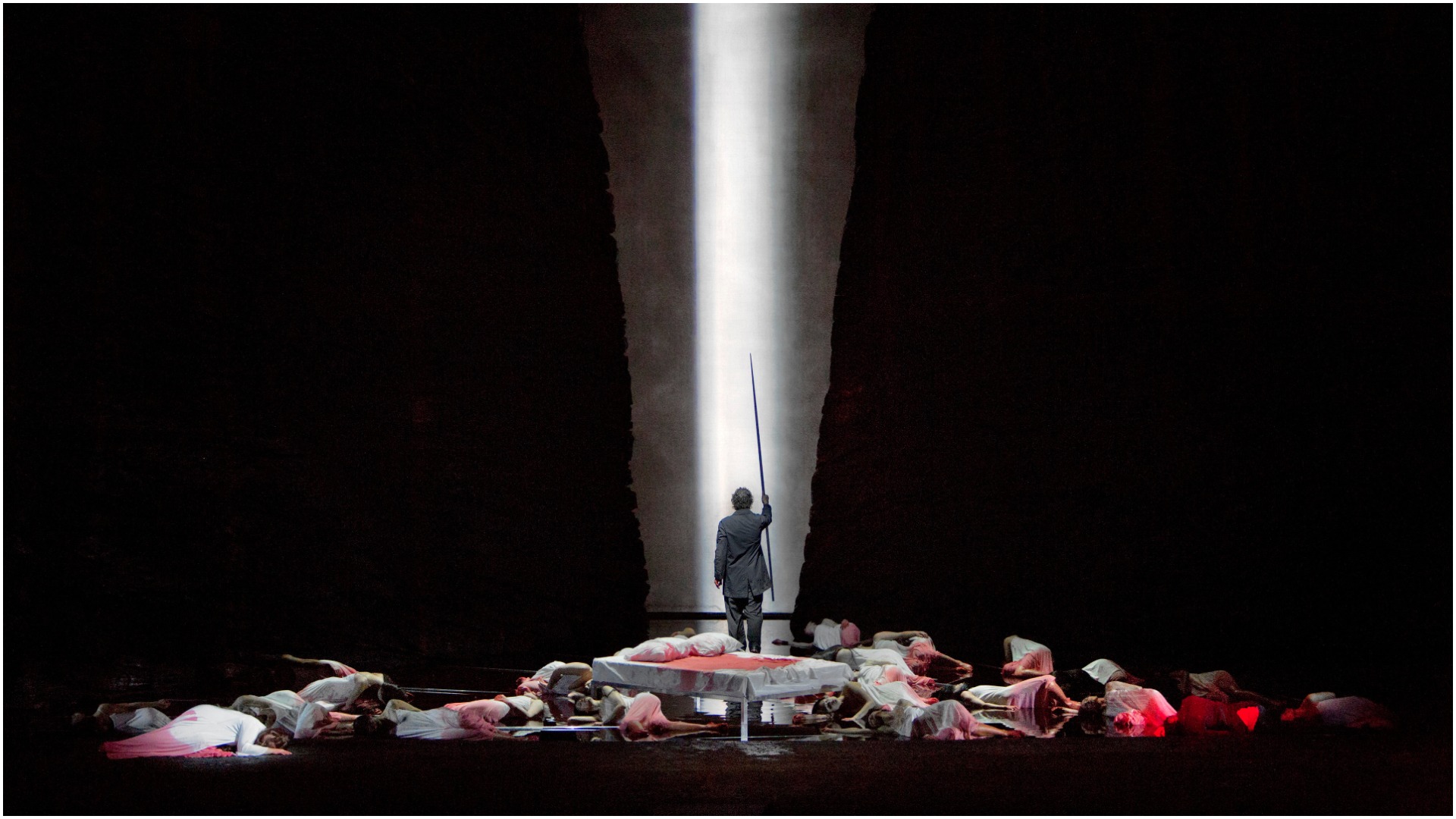The Women of Amphissa is a 1887 painting by the Anglo-Dutch artist Lawrence Alma-Tadema. (Clark Art Institute)
Month: July 2020
I invite visitors who like classical music to watch an hour-and-a-half documentary: ‘Bach: A Passionate Life’. The host of the documentary informs us that, when Luther took refuge in a castle, he believed that the devil was stalking him from the ceiling. Compare such dark paranoia with the return to the artistic spirit that then reigned in Renaissance Rome!
In that room the dark monk, Luther, translated the New Testament using many German dialects, thus creating a unified language for that nation. In one of my previous posts I said that all western nations since Constantine, except for the brief reigns of Julian the Apostate and Hitler, should be considered quackery from the new point of view. The reason why the Germans allowed themselves to be brainwashed so easily since the US-imposed Diktat is explained if we see that the inertia of their culture was infinitely more Christian than the occult paganism of the Third Reich. In other words, what succeeded again in WW2 was, as happened after the assassination of Julian, the grip that the Christian archetype holds over the white man’s psyche.
Compare my point of view with what even a racist revolutionary, a non-Christian, wrote in one of his novels. Harold Covington envisioned a dispute between Christians and pagans, both freedom fighters for the 14 words, during the racial revolution: a dispute that was only resolved when the pagans allowed that the hymn of the new Aryan republic was… a hymn that Luther had composed! Naturally, neither the late Covington nor his secular followers that can still be heard once a month on Radio Free Northwest knew that Christianity and the JQ are one and the same.
These Luther hymns went perfectly in line with the central goal of Bach’s life, as we are informed after minute 29 of the documentary linked above: ‘A well-regulated church music to the glory of (((God)))’. Those were Johann Sebastian Bach’s words: the words of the grandfather of all the composers! But without putting triple parentheses now, after the 45th minute of the documentary a writer confesses to us, when we hear Partita for Violin No. 2 in the background, that this sort of musical soliloquy ‘would convince me that there is a God’.
This is most interesting because that Partita is the music solo I have heard the most from Bach, and although it is secular (i.e., non-sacred music) it perfectly portrays the feeling of the child of my dream in my previous post: that what for my father (or Christians) seemed sublime to me it seems hellish. Infernal not in the sense of today’s degenerate music, but in another sense. Just as Gothic cathedrals represent magnificent art, much of Bach’s music (and even Beethoven’s quartets) transports me to that gargoyle-filled nightmare world of which I want nothing more than a return to a musically enlightened world.
Please understand me well. Unlike those Neanderthals who don’t understand the music of Bach, Beethoven or Wagner, since my parents were musicians by profession I did understand them. But it is the dark Zeitgeist that, as in my dark cathedrals series of dreams, bothers me even though I recognise that the Partita is a masterpiece. Curiously, when after getting used to listening to it on violin I once heard the same Partita by Bach, but this time versioned for classical guitar, the gargoyles disappeared and I was finally able to enjoy it. Something similar happens to me with the church organ and the harpsichord: I cannot hear them except when the pieces are versioned for other classical instruments, although more modern. It is the Christian Era Zeitgeist that irritates me, and to understand my subjectivity I must translate another page of El Grial:
______ 卐 ______
What impresses me about this historical revisionism is the clairvoyance of the teenager I was, whom my parents and a psychoanalyst destroyed at the time. He saw things as they were, and compared the loss of his beautiful life with the loss of the ancient Hellas. For the adolescent Caesar, the best of his Palenque had been his ‘Greek’ stage, and the stage after November 1974 was like the fourth century and subsequent European centuries. How I remember the way in which I then projected that drama on the image of an LP that my father liked, that we called the Hercules Mass.
 I was deeply hurt by the transition from the world of the Greeks and the Romans to Christendom; and the face of the lad on the cover of the album, together with the Kyrie of Josquin des Prés, represented the fateful transit: sculpture and music that, in my adolescent mentality, I thought dated from the times after Constantine. Still something of the Hellenic beauty was seen in the profile of the young man—I felt inside—and it hurt me that, unlike the jovial times of the ancient world, he was now praying with his face up (note that the female above the lad is no longer Aryan). Later I remember very vividly that, already living with my grandmother in the darkest stage of my life, I blamed my father’s Christianity for the annihilation of the beautiful youth of Athens. What I was unaware of at my seventeen is that the grandiose temples, statues, and libraries of Greco-Roman culture had been ripped apart, and adepts of the old culture marginalised and even genocided by Christians…
I was deeply hurt by the transition from the world of the Greeks and the Romans to Christendom; and the face of the lad on the cover of the album, together with the Kyrie of Josquin des Prés, represented the fateful transit: sculpture and music that, in my adolescent mentality, I thought dated from the times after Constantine. Still something of the Hellenic beauty was seen in the profile of the young man—I felt inside—and it hurt me that, unlike the jovial times of the ancient world, he was now praying with his face up (note that the female above the lad is no longer Aryan). Later I remember very vividly that, already living with my grandmother in the darkest stage of my life, I blamed my father’s Christianity for the annihilation of the beautiful youth of Athens. What I was unaware of at my seventeen is that the grandiose temples, statues, and libraries of Greco-Roman culture had been ripped apart, and adepts of the old culture marginalised and even genocided by Christians…
Now I know that the tragedy of the West in general, and the tragedy of my life in particular, are two sides of the same coin. The soul that the adolescent Caesar so projected on the downgraded ‘Greek’ of the album was killed by the same regressive forces by which the Greco-Roman world was killed: the incredible evil, stupidity, massive psychosis and envy of humans. From this angle, writing about my life has also been, in some way, writing about the western tragedy.
Jupiter Verospi
The fourth part of El Grial begins with a dream that I now translate into English:
I was walking on a street by day next to Dad, who pointed out to me, enthusiastic and joyful as his character, the great church—or wall of a great church, rather like a Gothic cathedral—while I felt real horror for the (not glimpsed, only felt) kind of gargoyles, low relief sculptures or external figures of a very dark-stone cathedral. The contrast between the spirited Dad in pointing out to me that Christian bastion as something so positive that he even smiled at me and the horrified son—although I corresponded to Dad’s smile from my height as a child with another smile to be nice with him—couldn’t be greater.
Then I commented that over the years I had several dreams with that theme. I interpreted that my father lacked enough empathy to realise that traditional Catholic doctrine, which seemed so positive to him, horrified his little firstborn.
I recently said that Parsifal’s music has been one of my favourites, despite the fact that the opera characters are quasi-Christian knights that Wagner devised. Wagner’s last opus is not a hundred percent Christian insofar the script never names Christ or Christianity. Rather, it resembles the spirit of the Germanic sagas in times of Christian conversion, when something of the ancient pagan spirit was still breathed. In this first entry about how I contrast Wagner with Bach I confess that, unlike Parsifal, traditional Christian music has horrified me as much as that series of dreams with which I opened this post.
Iconoclasm, even in music, is a thorny topic. If we proclaim the transvaluation of all values the question immediately arises: What to do with the so-called sacred music after the anti-Christian revolution conquers the world? We have already seen that Nietzsche loved Parsifal’s music but abhorred its message, especially the chastity of the quasi-Christian knights. In my opinion, Wagner, Hitler’s favourite composer, is salvageable but how should we treat sacred music from his predecessors?
Unlike Richard Wagner (1813-1883) who flourished a century after the death of Johann Sebastian Bach (1685-1750) Bach had no passion for the Germanic sagas of the pagan past. On the contrary: Bach composed his music for the main Lutheran churches in Leipzig, and adopted Lutheran hymns in his vocal works. The hundreds of sacred works that Bach created are generally seen as a manifestation not only of his craft, but of his great devotion to the god of Christians: the very god of the Jews. Bach even taught Luther’s catechism as Thomaskantor in Leipzig, and some of his pieces represent it. For example, his very famous St Matthew Passion, like other works of this type, illustrates the Passion of (((Christ))) directly with biblical texts.
Compare all this with Wagner’s relatively paganised work who didn’t quote the gospel: a musician who, by introducing pre-Christian elements in his operas, was already starting to shake off the Judeo-Christian monkey from his back. But before continuing my talk about Bach I would like to quote, once again, the words of Nietzsche that appear in The Fair Race:
§ 61
Here it becomes necessary to call up a memory that must be a hundred times more painful to Germans. The Germans have destroyed for Europe the last great harvest of civilisation that Europe was ever to reap—the Renaissance. Is it understood at last, will it ever be understood what the Renaissance was?
The transvaluation of Christian values: an attempt with all available means, all instincts and all the resources of genius to bring about a triumph of the opposite values, the more noble values… To attack at the critical place, at the very seat of Christianity, and there enthrone the more noble values—that is to say, to insinuate them into the instincts, into the most fundamental needs and appetites of those sitting there…
I see before me the possibility of a heavenly enchantment and spectacle: it seems to me to scintillate with all the vibrations of a fine and delicate beauty, and within it there is an art so divine, so infernally divine, that one might search in vain for thousands of years for another such possibility; I see a spectacle so rich in significance and at the same time so wonderfully full of paradox that it should arouse all the gods on Olympus to immortal laughter: Cæsar Borgia as pope!… Am I understood? Well then, that would have been the sort of triumph that I alone am longing for today: by it Christianity would have been swept away!
What happened? A German monk, Luther, came to Rome. This monk, with all the vengeful instincts of an unsuccessful priest in him, raised a rebellion against the Renaissance in Rome…
Instead of grasping, with profound thanksgiving, the miracle that had taken place: the conquest of Christianity at its capital—instead of this, his hatred was stimulated by the spectacle. A religious man thinks only of himself. Luther saw only the depravity of the papacy at the very moment when the opposite was becoming apparent: the old corruption, the peccatum originale, Christianity itself, no longer occupied the papal chair! Instead there was life! Instead there was the triumph of life! Instead there was a great yea to all lofty, beautiful and daring things!
And Luther restored the church.
Nymphes et un satyre
Four months ago I wrote a short article about Wikipedia saying that the trick they use to turn that online encyclopaedia into anti-white propaganda is the wiki-policy they call ‘reliable sources’. Well, recently a Polish fan of Stefan Molyneux (that he’s Polish I gather from the IP he left in the wiki’s talk page) posted some words that portray what I think is the inherent fraud in Wikipedia. The Pole wrote (some of his syntax corrected):
Don’t you even see what kind of mental gymnastics and loophole thinking made from double standards you’re performing? He [Molyneux] was censored because he was speaking things the mainstream, left/far-left media you deem as ‘Reliable Sources’ didn’t like. And what your ‘Reliable Sources’ don’t like, they usually call racist, misogynist or hate speech, for convenience. So let’s follow you and your Reliable Sources’s thinking, step by step:
> Reliable Sources: Guy X has wrong opinions, they should be censored, because free speech and freedom of thought is violence and it’s dangerous for individuals to use their brains
>Guy X gets censored, anyone defending him gets shunned and also censored
>You, self-proclaimed liberals from Wikipedia: ‘We won’t censor Reliable Sources, our Reliable Sources (even though clearly biased) say that he’s a white supremacist so it means that he is’.
How ironic is it that you call fact-checking your sources as ‘censorship’, when what you’re doing now along with those sources is exactly that: censorship.
What contests the claims about him being far right are his actions and his political views. The proof is in the source material. His exact words. His podcasts and videos. They should be the main—reliable source here—, not opinions of some biased media of your choice. Especially when you want to judge the man and write an article summarising him, his views and his life.
You can’t do it legitimately and fairly when the only thing you’re doing here is quoting opinions of unrelated people instead of the man himself. The Policy and Guidelines in which you try to find support for your political bias and unprofessional way of creating articles, clearly states that all, often biased sources, such as the ones used in this particular article, need to be fact-checked, and proper research needs to be done in order to write an article from a NPOV [neutral point of view].
But you just don’t care. That’s not what you want, you don’t want the truth to be conveyed. You simply want to silence a man you disagree with. Just like a typical ‘liberal’, drunk on power and influence, absolutely confident that he cannot possibly be ever incorrect. You’re a part of the reason why we’re entering a truly dystopian phase of modern civilisation.
Thought police, abuse of power, censorship. The purpose of Wikipedia is not to convey someone’s opinions on a given subject, but straight facts. And the facts are that you simply took mainstream media’s opinion of Stefan, and put it in the article as if it was the truth, without any research whatsoever. Whoever made this article or helped to edit it should permanently lose his editorial rights for violating basic rules for article creation, which was already quoted above.
Alas, the horrible wiki editors are right. According to the so-called reliable sources (kosher approved in plain English) Moly is a vile racist white supremacist just for discussing race and IQ studies (the video I recently embedded is now the best one on Moly in YouTube). Incidentally, Peter Schiff also commented on the expulsion of Moly and in his latest podcast he even fears that he could also be expelled from YouTube…!
WDH – pdf 349
 Click: here
Click: here
The reason I practically don’t interact in other racialist forums or follow them on Twitter is that they don’t feel infinite hatred, and I strongly believe that the only way to save the race is through the amalgamation of your soul, your whole being with the spirit of The Turner Diaries: to be at the right of Himmler during the West’s darkest hour, so to speak. Furthermore, the pundits of white nationalism are ignoring the Christian problem. Counter-Currents posted yesterday ‘Kevin MacDonald’s Individualism & The Western Liberal Tradition. Part 7: White Maladaptive Altruism’ by Ricardo Duchesne. Since the pundits of white nationalism follow MacDonald and not the Führer, they are able of writing things like the following, which appeared yesterday in Duchesne’s article:
The Quakers were “highly principled and deeply Christian, with a powerful sense of fairness and egalitarianism.” They had, in MacDonald’s words, a “genuine empathy for the slaves,” morally outraged by “acts of great injustice done to their fellow human beings.” The Quakers were also “highly egalitarian” in their institutional organization; “there were no bishops or ordained ministers, and any person (including women) could speak.” They emphasized the “intellectual and moral equality of African slaves.” Although the Methodists were more into self-help, diligence, and hard work, they too believed that all humans were equally valuable, and that’s why they opposed slavery.
MacDonald’s point is not that whites were wrong to seek the abolition of slavery. His aim is to understand the excessive moral preoccupation whites exhibited about the plight of Africans coupled with their current pathological empathy for aggressive immigrants occupying their lands. In light of this reality, and the complete indifference Muslims have to this day about their thousand-year-old enslavement of Africans, these Puritan-descended movements do seem incredibly naive, child-like, and devoid of realism. What is there to admire about this?
I will make the argument that the eighteenth century was period of “radical change” in the conception of the Western self…
The 18th century? I would say that the West took a very wrong turn from the 4th century! By targeting putatively genetic rather than ideological altruism (Christian malware) this MacDonald disciple doesn’t directly blame the inversion of values on Christianity pure and simple (not only Quakers): something that Nietzsche detected for the first time in the history of ideas.
Like the Quakers Parsifal was child-like. He felt great compassion for those who suffer, especially King Amfortas, who had fallen out of favour since Klingsor struck him with the holy spear: a wound that was not healing. Nietzsche loved Parsifal’s music but hated the message of his old friend’s last opera.
Musically, I think Parsifal is Wagner’s most accomplished work. The overtures of each of the three acts, as well as the magnificent music when Gurnemanz takes Parsifal into the castle in the first act; the background music and the voices by the end of the discussion between Parsifal and Kundry in the second act, and let’s not talk about the Good Friday music in the third act, are the most glorious and spiritual I have ever listened. No wonder why Max Reger (1873-1916) confessed: ‘When I first heard Parsifal at Bayreuth I was fifteen. I cried for two weeks and then became a musician’.
I recently recycled a Wikipedia text talking about the religious aspects of National Socialism and I don’t see why not to do it again with a wiki passage about Parsifal, albeit with a pro-White spin instead of the philo-Semitic POV of that encyclopaedia.
Some writers see in the opera the promotion of racism or anti-Semitism. One line of argument suggests that Parsifal was written in support of the ideas of Arthur de Gobineau who advocated Aryanism. Parsifal is proposed as the ‘pure-blooded’ (i.e. Aryan) hero who overcomes Klingsor, who is perceived as a Jewish stereotype, particularly since he opposes the quasi-Christian Knights of the Grail. Such claims remain heavily debated, since there is nothing explicit in the libretto to support them. Wagner never mentions such ideas in his many writings, and Cosima Wagner’s diaries, which relate in great detail Wagner’s thoughts over the last 14 years of his life (including the period covering the composition and first performance of Parsifal) never mentions any such intention.
Wagner first met Gobineau very briefly in 1876, but it was only in 1880 that he read Gobineau’s An Essay on the Inequality of the Human Races. However, Wagner had completed the libretto for Parsifal by 1877, and the original drafts of the story date back to 1857. Despite this chronological evidence, Gobineau is frequently cited as a major inspiration for Parsifal.
The related question of whether the opera contains a specifically anti-Semitic message is also debated. Some of Wagner’s contemporaries and commentators (e.g. Hans von Wolzogen and Ernest Newman) who analysed Parsifal at length, make no mention of any anti-Semitic interpretations. However the critics Paul Lindau and Max Nordbeck, present at the world premiere, noted in their reviews how the work accorded with Wagner’s anti-Jewish sentiments. More recent commentators continue to highlight the perceived anti-Semitic nature of the opera, and find correspondences with anti-Semitic passages found in Wagner’s writings and articles of the period.
However, the conductor of the premiere was Hermann Levi, the court conductor at the Munich Opera. Since King Ludwig was sponsoring the production, much of the orchestra was drawn from the ranks of the Munich Opera, including the conductor. Wagner objected to Parsifal being conducted by a Jew (Levi’s father was in fact a rabbi). Wagner first suggested that Levi should convert to Christianity, which Levi declined to do. Wagner then wrote to King Ludwig that he had decided to accept Levi despite the fact that he had received complaints that ‘of all pieces, this most Christian of works’ should be conducted by a Jew. When the King expressed his satisfaction at this, replying that ‘human beings are basically all brothers’, Wagner wrote to the King that he ‘regarded the Jewish race as the born enemy of pure humanity and everything noble about it’.
Here we have once again the pathological altruism of influential Christians, in this case the very king. Not only the 19th-century Quakers practiced out-group altruism (Parsifal felt in-group altruism) but the Germans themselves, even Wagner’s sponsor.
It has been claimed that Parsifal was denounced as being ‘ideologically unacceptable’ in the Third Reich, and that the Nazis placed a de facto ban on Parsifal. In fact there were twenty-six performances at the Bayreuth Festival between 1934 and 1939 as well as twenty-three performances at the Deutsche Oper in Berlin between 1939 and 1942. However, it was not performed at the Bayreuth Festival during World War II.
Today at dawn, yesterday and the days before yesterday I watched the complete Parsifal directed by Daniel Barenboim (another Jew!) and compared it with other representations. It was the first time that I watch it with Spanish subtitles. After finishing my book El Grial I was impressed that in this 1993 performance the spear ended on the Grail cup at the very end. I couldn’t help but compare it to my extremely analogous metaphor in the climax of my book.
But I can’t use Parsifal in my book because the opera is riddled with Christian allusions, and my book is as anti-Christian as the last page of Nietzsche’s The Antichrist. But I also projected myself with what Parsifal says to Gurnemanz: that I lost my path for decades before finding my way back to Amfortas (all of this will seem cryptic to anyone who hasn’t read the book).



